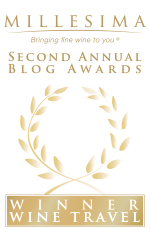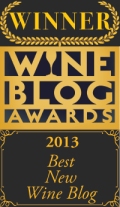If you want the short explanation for what Aussie wine you should be drinking now, read my column Unscrewed in the Village Voice. For those interested in the long answer, read on…
WHY AUSTRALIA NOW?
If your last memory of Australian wine was an overripe, jammy Shiraz you tried to repurpose as boiled down syrup for dressing scones or steaks (depending whether it was breakfast or dinner), erase it, please. The new breed of Aussie wine is leaner, more structured and food-friendlier than before, and they are headed to New York’s shores, thanks to a wave of young, dynamic winemakers and importers.
Not that older generations of Australian vintners didn’t already produce balanced, delicate wines; it’s just the bulk of what landed on our shelves accommodated our wallet and palate preferences of the time: “cheap and cheerful” in the image of, if not, Yellowtail; or big and alcoholic, propagated by Robert Parker’s world wine-ratings domination. Thankfully, consumer fealty is no longer pledged to critters or critics as we slowly move out of both eras and into a phase of open-minded discovery.
Trying to broach the topic of Australian wine in this smidgen of a column, however, is akin to condensing the Iliad into a leaflet (although that is essentially what we have done with Aussie wine imports). Australia is a tome-worthy topic; if you want to dig deeper into it, a very good one has been written: James Halliday’s Wine Atlas of Australia.
Let me start with a brief geography lesson. I attended an Australian wine tasting and conference the other week, and during a panel Q&A, a fellow attendee (and presumably knowledgeable member of the wine trade) raised his hand to ask why nobody has vineyards in the middle of the country. Remember that photo in high school geography class of a big, fat rock known as Ayers? It sits in a desert. I am sure Mr. Whomever-taught-him-social-studies-in-high-school would have been mortified by the query.
This initially hilarious gaffe led to my realization that Australia is grossly misunderstood in a number of ways, starting with her climate, geography and topography. Australia is the sixth largest country in the world, and the driest habitable continent, thus a lot of the land is far from suitable for grape production. Up North, the weather is downright tropical: good for beach-holidays and diving the Great Barrier Reef, but not vineyards. That leaves the South for the preponderance of vineyard sites, and if you look at a map, we are really talking about the Southwest and Southeast regions.
But within the SW and SE of Australia lies incredible diversity. The number of Macro-, Meso-, and Micro-climates in Australia is as multitudinous as ethnic eateries in the five boroughs. So, it is unfair to continue lumping all of Australian wine into one category, one style, one grape (Shiraz/Syrah) with one broad brushstroke. It’s like equating a New Yorker with a Texan (macro); a LES denizen with an Upper East Side socialite (meso); or Christopher Street “patron” with Charles Street resident (micro). We are all Americans, but definitively not the same.
So what happened Down Under? Export growth to the U.S. exploded in the ’90s and in 2004 Australia overtook France as the second largest supplier of wine to the U.S. market. But like many trends not based on quality and integrity, oversaturation led to busted demand (like Jersey Shore and supposedly, now, cupcakes). Additionally, many producers had relied on a narrow profit margin based on a currency advantage that ultimately swung out of their favor, leading to both hard financial times and a vinous identity crisis. One sad outcome of all this was the death of boutique importers bringing handpicked, unique wines from talented winemakers to the U.S. Suddenly “Aussie wine” was a dirty word (or phrase, rather).
But this should really be old news, and fast, because there is a silver-lining to market corrections. Instead of serving up another global Frass Canyon-style spit bucket of Shiraz, a la Sideways, the country has come together collectively through the Government supported Australian Wine Trade Board to promote their wine regions individually. Although every region holds gifted vintners worthy of our attention, the hot new wines piquing the interest of writers, importers and consumers are coming from “cool-climate” regions. What does that mean? Cooler climates tend to produce grapes that lead to wines of greater finesse, delicacy, balance and acidity and often, lower alcohol. The antithesis of what we previously demanded from Australia.
Courageous New York-based importers of small batch Aussie-only wines Gordon Little and his wife Lauren Peacock of Little Peacock Imports, are working to deliver the Aussie wine renaissance to New York. Calling them courageous may sound melodramatic, but given America’s slow-to-fade hangover from the first Australian wine experiment, staking their livelihood on championing these wines is a form of bravery. The company slogan: “Wines Aussies kept for themselves. Now imported to the United States” provides hope that careful curators like them are staging a comeback, with New Yorkers’ palates serving as proving ground.
Mr. Little outlined their goals: “introduce Australian wines that reflect their terroir or sense of place,” that “over-deliver at the price point, have vibrant acidity and moderate alcohol and pair well with food.” Mr. Little and his wife spent weeks chasing down wines from smaller producers “who care about growing good fruit and using a more minimal intervention approach in their wines, letting the soils speak for themselves.”
Mr. Little spoke to a few of the struggles they are facing in the current NY Market: “Australian wine above $10 is a challenge – first, because New York is a highly competitive wine market. Second, and more importantly, with Australian wine we have to change perceptions of what it is and can be.” He noted that many educated wine drinkers had no idea that Australia produced Pinot Noir, let alone good ones. His advice for tasting the promise of Australia’s fine wines is to look for smaller producers from cooler-climate zones. He also provided us recommendations of regions to look out for, including ones with ample Pinot Noir.
Margaret River: On the furthest shores of southwest Australia lies this maritime region known for profound Cabernet Sauvignon and Chardonnay, as well as surfing off some particularly gorgeous beaches. Fine wines are the foundation of the region’s reputation, and these gems are finally receiving the international acclaim they deserve. Bordeaux blends, especially whites, are also praised. Pioneers and premium producers include Leeuwin, Moss Wood, Vasse Felix, and Stella Bella..
Yarra Valley: Known for its stunning beauty, the vineyards in this cool-climate region in Victoria may date back to 1838, but it’s also the stage for many young winemakers spearheading the new wave of Aussie wines. Their philosophy: lower alcohol, reduced use of oak, hand-harvesting, and food-friendliness. These winemakers refer to themselves as the “South Pack.” The region’s principal grapes are Pinot Noir and Chardonnay, with Cabernet Sauvignon and Shiraz close behind. Looking for Côte Rôtie-style wines? Some exceptional bottlings of Syrah blended with a small percentage of Viognier are produced in Yarra. Try wines from Luke Lambert, Jamsheed, Ben Haines, Giant Steps, and Punt Road.
Mornington Peninsula: Terroir, terroir, terroir. This could be written of most places, but is especially significant in this crescent-shaped region where soil, aspect, altitude and wind change by the meter. Pinot Noir dominates red wine production, Chardonnay for white, with exceptionally made (and often priced) single-vineyard bottlings showing off the potential of this playground of the nearby affluent Melbourne locals. Moorooduc Estate and Dexter Wines are both available in New York and produce delicious, competitively priced wines.
Adelaide Hills: Twenty-five minutes east of Adelaide, altitude is the key to this region’s cool climate; in that short time, temperature can drop by as much as 30 degrees. Vineyards are tucked into dips and peaks of valleys, and in between cherry and apple orchards — driving through this landscape could satisfy a rollercoaster enthusiast. Planted predominantly with white grapes, many claim the Hills as the home of Aussie Sauvignon Blanc, and increasingly, sparkling wines from Pinot and Chard. Reds are driven by Pinot, with a growing appreciation for spicy Shiraz and Italian varieties such as Nebbiolo and Barbera. Look for Shaw and Smith, Henschke, and d’Arenberg, with more producers coming soon.
Eden Valley: Sitting within but high above the Barossa Valley is this cool, windswept region that produces a high percentage of Shiraz but is prized for its Riesling. Eden Riesling develops unlike any other place in the world besides the Clare Valley (also in Australia), into bright, stony, lime-juice-y concentrated wines that are not only a great value but have the capacity to age up to ten years (if not longer). In fact, shop for older vintages, as the high acid in young wines can brighten teeth like Crest Whitening Strips. Pewsey Vale, the oldest winery dating to 1847, sets the benchmark for the region, and is relatively easy to find in NYC stores.
If you prefer to taste before you buy, Public Restaurant and Eleven Madison Park are the two big supporters of Aussie wines in New York, with rare and small parcels often pre-sold to them first.
Public, 210 Elizabeth Street, 212-343-0918; Eleven Madison Park, 11 Madison Avenue, 212-889-0905
To accompany this article, I reached out to nine wineries around Australia for a short Q&A. I wanted to give vintners an opportunity to speak directly to American drinkers about the experience and struggle of winemaking in Australia. A new winery and winemaker will be posted on my blog each day. Please follow at chasingthevine.com












Pingback: Winemaker interviews! (courtesy of ChasingTheVine.com) | Little Peacock Imports
On your map of Australia Waneroo in Western Australia is spelt “Wanneroo”
I appreciate you pointing it out, but I didn’t make the map and can’t edit that map. I can only consider finding a different map. Alas, I don’t have the skill of a graphic designer. Just a those of a writer and photographer:) Cheers!